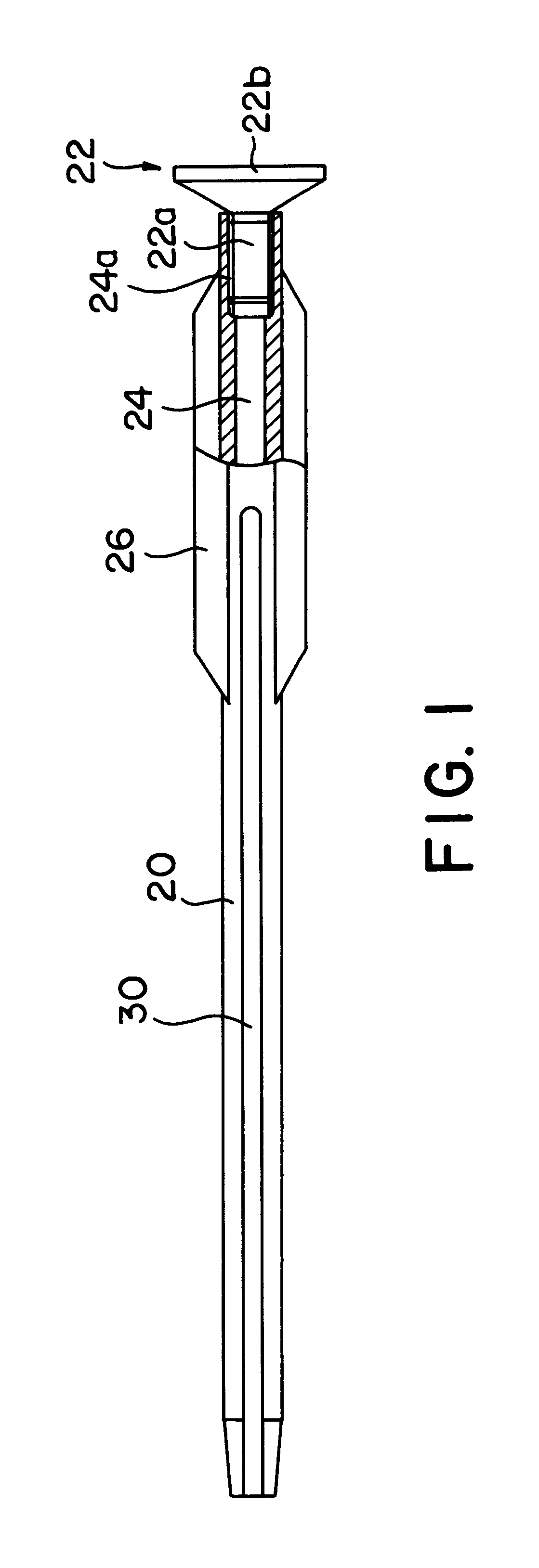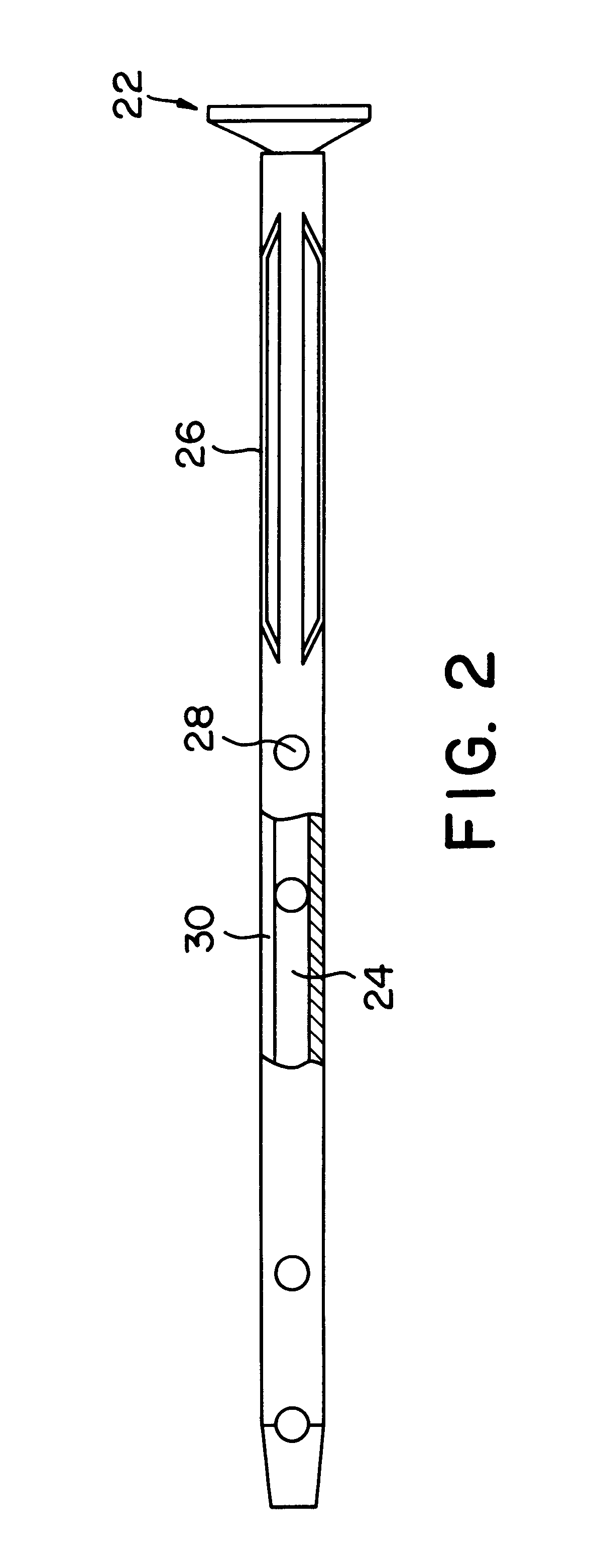Intramedullary nail
a technology of intramedullary nail and nail, which is applied in the field of intramedullary nail, can solve the problems of rigid fixation, difficult arthrodesis of ankle joint, and inability to pass through transfixation screws
- Summary
- Abstract
- Description
- Claims
- Application Information
AI Technical Summary
Problems solved by technology
Method used
Image
Examples
Embodiment Construction
A case in which the ankle joint is under arthrodesis using the intramedullary nail of the present invention will be described below with reference to the attached figures. FIG. 5 is a model diagram which shows the skeletal structure of the foot. The bones of the foot are connected in order, from the bottom, of the calcaneus 10, talus 12 and tibia 14. The articular surfaces of the calcaneus 10 and the talus 12, and the articular surfaces of the talus 12 and the tibia 14 form joints 16 and 18, respectively.
FIGS. 1 and 2 are partial section side views of the intramedullary nail of the present invention. As in conventional intramedullary nails, this intramedullary nail 20 has a rod-form body with a hollow portion 24 inside; and the characterizing feature of this intramedullary nail 20 is that a plurality of fins 26 are formed on the outer circumference of the nail. The intramedullary nail 20 is made of a metal, e.g., a titanium alloy, etc., which does not have a deleterious effect on ma...
PUM
 Login to View More
Login to View More Abstract
Description
Claims
Application Information
 Login to View More
Login to View More - R&D
- Intellectual Property
- Life Sciences
- Materials
- Tech Scout
- Unparalleled Data Quality
- Higher Quality Content
- 60% Fewer Hallucinations
Browse by: Latest US Patents, China's latest patents, Technical Efficacy Thesaurus, Application Domain, Technology Topic, Popular Technical Reports.
© 2025 PatSnap. All rights reserved.Legal|Privacy policy|Modern Slavery Act Transparency Statement|Sitemap|About US| Contact US: help@patsnap.com



